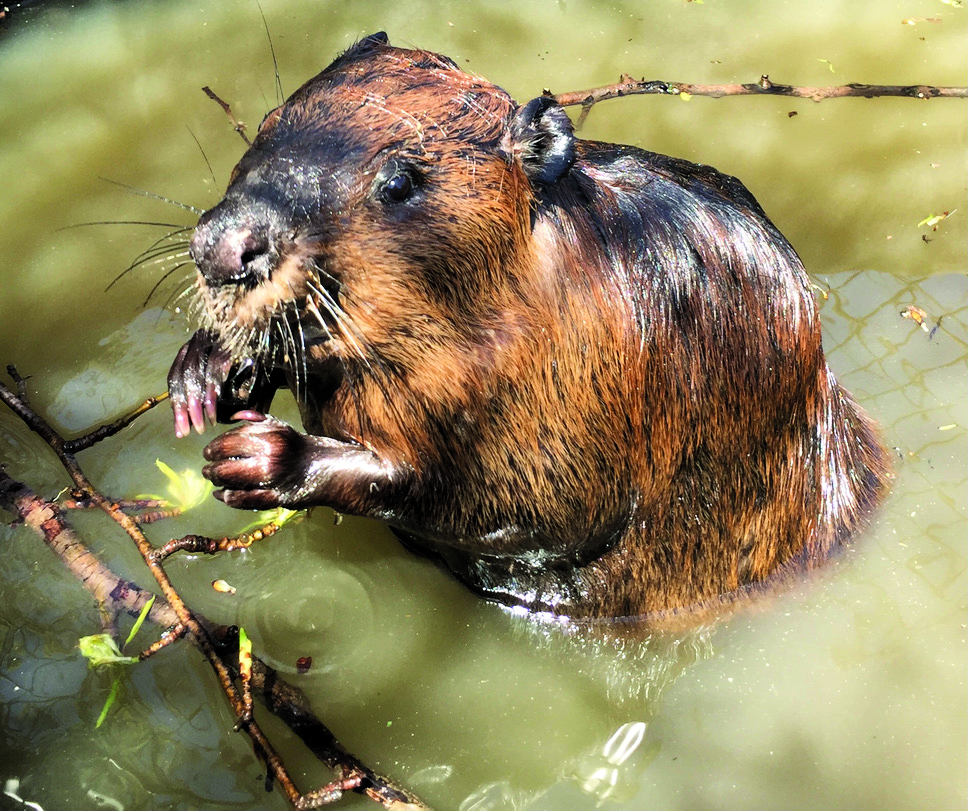
By Chantal Theijn
To The Haldimand Press
JARVIS—At Hobbitstee we care for sick, injured, and orphaned wildlife, but we also work on wildlife mitigation and promoting peaceful coexistence. For several years now we have seen an increase in the number of orphaned beaver kits. In an effort to reduce this number we have created a humane beaver mitigation project.
Beavers have a very strong and complex family bond. Beaver kits remain with their family for two to three years. During that time, they help with the care and raising of their younger siblings. When they are sexually mature at age two or three, they set off and can travel 100 kilometres or more to locate a new habitat and start a family of their own.
Unlike popular belief, beavers are strict herbivores and in fact rodents. They do not eat fish, but they eat water plants, shoots, and tree branches instead.

JARVIS—A beaver photo courtesy of Chantal Theijn and Hobbitstee Wildlife Refuge.
Beavers play an important role in the environment. Beaver dams slow the flow of streams, reducing erosion. Beaver ponds help store water and release it more steadily throughout the year, which helps to maintain ground level water during dry years. The ponds and dams also trap and store sediment and help buffer potential contaminants and excess nutrients, improving water quality downstream. It goes without saying that the wetlands created by beavers are heavenly habitat for countless species of wildlife and vegetation – but short term, their damming can upset us humans.
Beaver dams can cause flooding of lands, roads, fences, and even buildings, and beavers can cause the loss of valued trees and shrubs. Removal of dams are extra work and costs money. Dam removal is also an exercise in futility, because the sounds of trickling water will cause the beavers to rebuild. Removal of the beavers is also a temporary solution because, as with everything in nature, where a vacuum is created others will move in and the whole process starts over. Another downside is that rarely can a whole family be trapped, so often little ones are left behind to starve to death without the adults. This is of course a less-than-humane solution.
Hobbitstee will be working on creating demonstration sites, which will show the efficacy of flow devices and other humane mitigation methods. We have our sites picked out and are anxiously waiting on slightly warmer weather so we can get these up and running.
We hope that combined with dissemination of information and workshops, these demonstration sites will help us convince landowners to opt for these more humane and more effective mitigation methods, which in turn will hopefully result in less orphaned beaver kits.
We also hope to work with landowners to have a look at the riparian areas (interface between land and a river or stream) on their land and assist with improving these very important natural areas.
For more information, please email us at chantal@hobbitstee.com.
Chantal Theijn is a wildlife rehabilitator and the founder of Hobbitstee Wildlife Refuge in Jarvis.
the presentation she made Saturday on heritage tomatoes.
Recent Posts

Caledonia resident is area’s newest millionaire with lottery win

Cornerstone Christian High School hosts first fundraiser for new school

Housing Minister implores Haldimand to increase housing builds; County calls out minister’s “wrong” numbers



